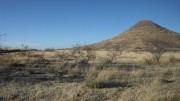Pink diamonds, already rare, are about to get scarcer as Rio Tinto (NYSE: RIO; LSE: RIO; ASX: RIO) has closed its iconic Argyle diamond mine, the world’s biggest and the main global source of high-quality pink diamonds.
Since opening its doors 37 years ago, the mine in Western Australia produced 865 million carats of rough diamonds and became the source of about 90% of the world’s prized rose-to-magenta hued stones.
The Argyle ore body, a single pipe known as AK1, was discovered in October 1979. Alluvial operations began in 1983, open pit mining kicked off in 1985, and the mine became a fully underground operation in 2013.
Today, Rio Tinto has mined the very last of these unique diamonds from the site, located within the ancient Matsu Ranges more than 3,000 km north of Perth.
“Fifty years ago there were very few people who believed there were diamonds in Australia – even fewer could have foreseen how the Argyle story would unfold,” Arnaud Soirat, Rio Tinto’s chief executive of Copper and Diamonds, said in a statement.
“To arrive at this final chapter has required vision, courage and determination to overcome significant challenges to enter new territory in diamond exploration, mining and marketing,” Soirat stated.
The closure of Argyle will remove about 75% of Rio Tinto’s diamond output, yet the impact on the miner’s earnings will be negligible. Diamonds account for only 2% of its earnings, while iron ore — the company’s main commodity — accounts for almost 60%.
The operation will now undergo decommissioning and rehabilitation, which is expected to take five years. After that, Rio Tinto will monitor the site for a period yet to be defined.
End of an era
Andrew Wilson, general manager of Argyle, said the mine transformed the diamond sector, supplying gems for both ends of the market.
“A new chapter will now begin as we start the process of respectfully closing the Argyle mine and rehabilitating the land, to be handed back to its traditional custodians,” he said.
Argyle was Australia’s first large-scale diamond operation, pioneering the fly-in fly-out model, which included a workforce that came from across the nation.
It also triggered the creation and adoption of new technology and exploration methods to make the search for diamonds more efficient across the rugged and remote Kimberley landscape.
At its peak, Argyle churned out 40% of the world’s diamond output, which made it the biggest producer by volume.
Pricy gems
Analysts and auctioneers alike expect prices for pink diamonds to go up and, potentially spur exploration.
Pink stones have already been fetching record prices in the past few years and the closure of their main source could see that trend strengthen.
The “Pink Star” went for US$71.2 million at Sotheby’s Hong Kong in April 2017, setting a record for diamonds sold in auctions.
In 2018, the 18.96-carat Pink Legacy fetched US$50 million at Christie’s auction house, breaking the world record for price paid per carat for a pink diamond at auction.
At Sotheby’s Hong Kong 2019 sale, one of the star pieces — described as an “exquisite 10.64-carat vivid purplish pink diamond” — sold for just under US$20 million.
Rio Tinto’s own data show that prices for their Argyle pink diamonds jumped by 500% from 2000 to earlier this year.
— This article first appeared in MINING.com, part of Glacier Resource Innovation Group.






Be the first to comment on "Rio Tinto closes Argyle diamond mine after 37 years"